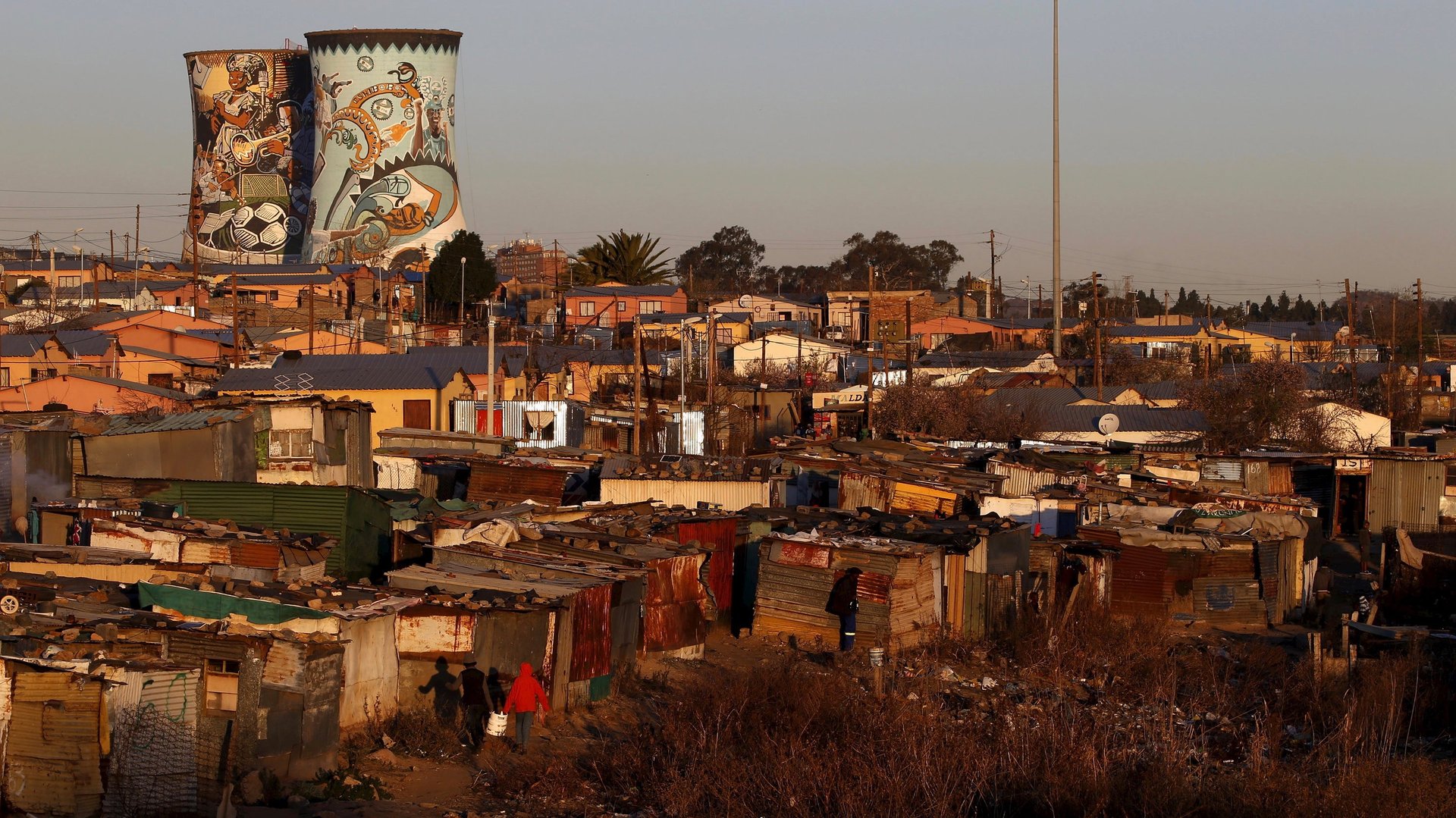Post-apartheid South Africa is failing the very people it liberated
Any progress made to liberate South Africa’s black majority since apartheid ended two decades ago looks to have been undone in just five short years, with more than half of the country now living in poverty.


Any progress made to liberate South Africa’s black majority since apartheid ended two decades ago looks to have been undone in just five short years, with more than half of the country now living in poverty.
Since 2011, three million more South Africans have been pushed below the poverty line, according to a study by the national data agency, Statistics South Africa, released this week. More than 30.4 million South Africans—55.5% of the population—live on less than 992 rand (about $75) per person per month.
The data, collected in 2015, is more optimistic than numbers from 2006, when two thirds of South Africans were living in poverty. But it captures the painful one-step-forward, two-steps-backwards dance the country has been engaged in over the last decade trying to improve the lives of its population. In 2006, 28.4% of the country was found to be living in extreme poverty. That number had only inched downwards to 25.2% by 2015.
Those numbers aren’t likely to improve. In the last year alone, South Africa has entered recession and seen its sovereign rating adjusted to junk status, making life harder for everyone, especially the poor.
One of the most enduring legacies of apartheid is the grinding poverty suffered by the country’s majority black population. Social spending on housing, healthcare, and a grant system were specifically designed to lift black South Africans out of poverty.
Black South Africans continue to be worst affected by rising poverty, with nearly half considered below Statistics South Africa’s lower-bound line of poverty, defined as individuals who have to sacrifice buying food for other essentials. Less than 1% of white South Africans are below this dire line.
South Africa’s youth are trapped in poverty from an early age, with 43.5% of the citizens under the age of 17 living in households that earned below the median income of 797 rand ($60) per month. It’s the start of a vicious cycle that continues into adulthood, with more than half of South Africans below the age of 35 unemployed.
A number of factors have pushed South Africa back. The full effect of the 2008 global financial crisis, initially hidden by the euphoria and capital injection of the 2010 FIFA World Cup, is now being felt. The country has also fallen victim to the sluggish growth seen by other commodities-driven economies, unable to improve on 3.3% growth in 2011, the highest GDP has peaked since the financial crisis.
Most at fault, though, has been South Africa’s inability to implement its own policies. In 2012, the country launched the “National Development Plan” with much pomp and an explanatory animated video. But a lack of political will has left the plan adrift. By almost all measures, South Africa is going to miss the goals it set for itself in the plan, including its aim to reduce poverty from 39% in 2009 to 0% in 2030 and to eliminate hunger.
Even the commission tasked with seeing the plan through is frustrated by the lack of government support to do so, despite having an office a few doors down from the president. ”We have a plan, we like it very much, we take it to parliament, the whole world praises it,” the group’s deputy commissioner Malegapuru Makgoba said recently. ”And we are the ones that don’t implement it.”